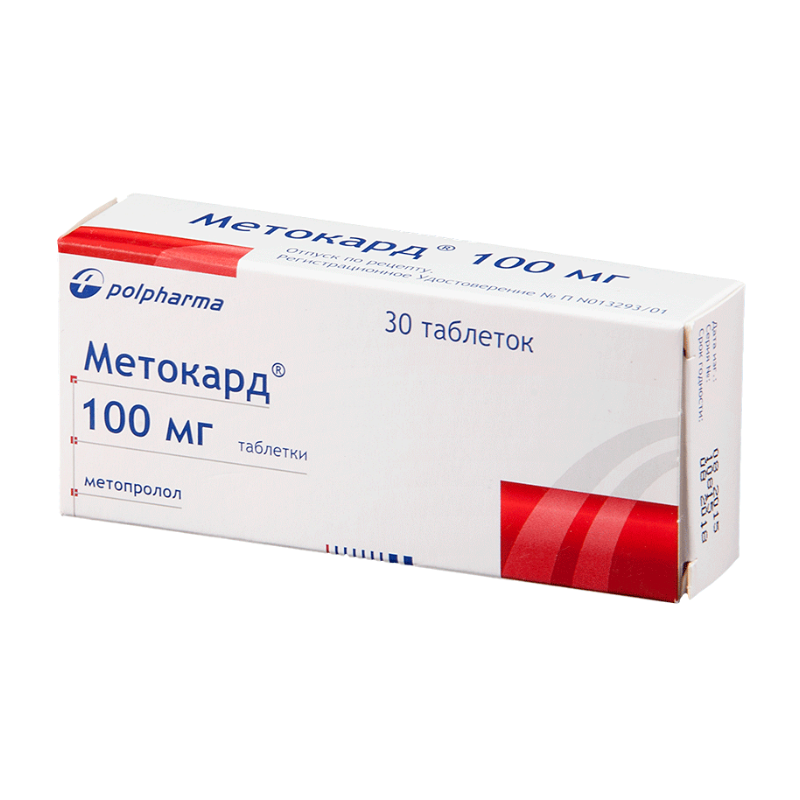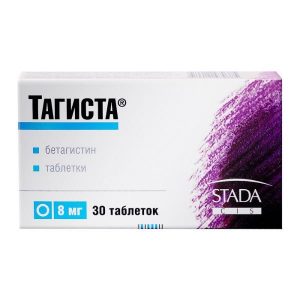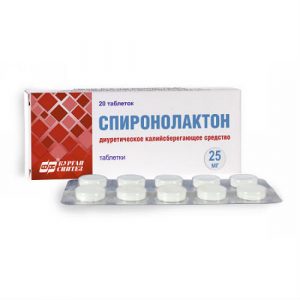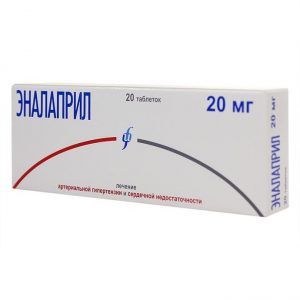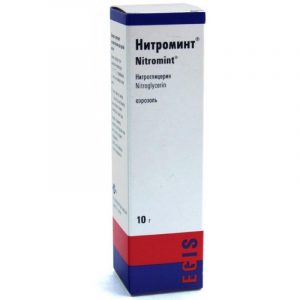Description
Release form
Tablets.
Packing
30 pcs.
The pharmacological effect of
metocardium has a hypotensive effect, antianginal, antiarrhythmic action.
Contraindications
Hypersensitivity, AV block II and III degree, acute heart failure, sinoauricular block, bradycardia, arterial hypotension, stage IIB-III chronic heart failure, cardiogenic shock, late stages and severe peripheral circulatory disorders, simultaneous administration of MAO inhibitors, intravenous administration of calcium channel blockers (verapamil, diltiazem) or other antiarrhythmic drugs (dysopiramide) , lactation.
Use during pregnancy and lactation
May use metocard during pregnancy if the expected effect of therapy outweighs the potential risk to the fetus. At the time of treatment should stop breastfeeding.
Special instructions
Monitoring patients with beta-blockers includes regular monitoring of heart rate (heart rate) and blood pressure, blood glucose in patients with diabetes. If necessary, for patients with diabetes mellitus, the dose of insulin or hypoglycemic agents prescribed orally should be selected individually.
The patient should be trained in the method of calculating heart rate and instructed on the need for medical advice for heart rate less than 50 beats / min. When taking doses above 200 mg per day, cardioselectivity decreases.
In heart failure, treatment with metoprolol begins only after the compensation stage has been reached.
It is possible to increase the severity of hypersensitivity reactions (against the background of a burdened allergic history) and the lack of effect from the administration of usual doses of epinephrine (adrenaline).
May aggravate symptoms of peripheral arterial circulatory disorders. Drug withdrawal is carried out gradually, reducing the dose within 10 days.
With a sharp cessation of treatment, a ² Ñwithdrawal ² Ñ syndrome may occur (increased angina attacks, increased blood pressure).
Particular attention when discontinuing the drug must be given to patients with angina pectoris.
With angina pectoris, the selected dose of the drug should provide a resting heart rate within 55-60 beats / min, with a load of no more than 110 beats / min.
Patients using contact lenses should take into account that tear fluid production may be reduced during treatment with beta-blockers.
Metoprolol may mask some clinical manifestations of hyperthyroidism (eg, tachycardia). Abrupt withdrawal in patients with thyrotoxicosis is contraindicated, since it can enhance symptoms.
With diabetes, it can mask tachycardia caused by hypoglycemia. Unlike non-selective beta-blockers, it practically does not enhance insulin-induced hypoglycemia and does not delay the restoration of blood glucose concentrations to normal levels.
If necessary, the appointment of patients with bronchial asthma, as a concomitant therapy using beta-2-adrenostimulators with pheochromocytoma – alpha-blockers.
If surgical intervention is necessary, it is necessary to warn the anesthetist about the therapy (the choice of a means for general anesthesia with minimal negative inotropic effect), drug withdrawal is not recommended.
Drugs that reduce catecholamine stores (e.g., reserpine) can enhance the effects of beta-blockers, so patients taking these combinations of drugs, should be under the constant supervision of a doctor to detect an excessive decrease in blood pressure and bradycardia.
In elderly patients, it is recommended to regularly monitor liver function. Correction of the dosing regimen is required only in the case of an elderly patient with increasing bradycardia (less than 50 beats / min), a pronounced decrease in blood pressure (systolic blood pressure below 100 mm Hg), atrioventricular block, bronchospasm, ventricular arrhythmias, severe liver dysfunction It is sometimes necessary to discontinue treatment.
Patients with severe renal impairment are advised to monitor renal function. Special monitoring should be carried out for patients with depressive disorders who are taking metoprolol in case of depression, caused by taking beta-blockers, it is recommended to stop therapy.
Due to the lack of sufficient clinical data, the drug is not recommended for use in children.
Effect on the ability to drive vehicles and sophisticated equipment
At the beginning of treatment with metoprolol, patients may experience dizziness, fatigue. In this case, they should refrain from driving vehicles and engaging in potentially dangerous activities that require increased concentration of attention and speed of psychomotor reactions. In the future, the determination of dose safety is carried out individually.
Composition
1 tablet contains 100 mg metoprolol tartrate.
Dosage and administration
Metocardum is taken orally, without chewing, with a small amount of liquid.
Arterial hypertension – 50 mg 2 times a day, if necessary, after a week, the dose is increased to 200 mg / day (2 tablets, 100 mg each). In the absence of a positive therapeutic result, it is possible to use the drug in combination with other antihypertensive or diuretic agents.
Angina pectoris – 50-100 mg 2-3 times a day, if necessary, an increase in dose to 400 mg / day is possible.
In case of cardiac arrhythmias – 50 mg 2-3 times a day.
Caution should be exercised in the treatment of elderly patients (generally, dose adjustment is not required).
The maximum dose is 400 mg / day.
Side effects
From the nervous system and sensory organs: headache, dizziness, nightmares, insomnia, depression, short-term amnesia, disorientation, paresthesia visual impairment, dry eyes, tinnitus.
From the cardiovascular system and blood (hematopoiesis, hemostasis): bradycardia, palpitations, hypotension, impaired AV conduction, circulatory failure, thrombocytopenia, agranulocytosis.
From the respiratory system: bronchospasm, suffocation.
From the digestive tract: dry mouth, heartburn, flatulence, pain in the stomach, vomiting, constipation / diarrhea.
Allergic reactions: itching, rash, psoriatic skin changes.
Other: Peyronie’s disease, myalgia, alopecia.
Drug Interactions
The simultaneous use of metocardium with MAO inhibitors is not recommended due to a significant increase in the hypotensive effect. A break in treatment between taking MAO inhibitors and metoprolol should be at least 14 days.
The simultaneous iv administration of verapamil can cause cardiac arrest.
Concomitant administration of nifedipine leads to a significant decrease in blood pressure.
Means for inhalation general anesthesia (hydrocarbon derivatives) increase the risk of inhibition of myocardial function and the development of arterial hypotension.
Beta-adrenostimulants, theophylline, cocaine, etrogens (sodium retention), indomethacin and other non-steroidal anti-inflammatory drugs (sodium retention and blocking the synthesis of prostaglandin by the kidneys) weaken the hypotensive effect.
An increase in the inhibitory effect on the central nervous system is noted – with ethanol, the summation of the cardiac depressant effect – with agents for general anesthesia, an increased risk of peripheral circulation disorders – with ergot alkaloids.
When taking Metocard with hypoglycemic agents for oral administration, it is possible to reduce their effect with insulin – increasing the risk of hypoglycemia, increasing its severity and lengthening, masking some symptoms of hypoglycemia (tachycardia, sweating, high blood pressure).
When combined with antihypertensive drugs, diuretics, a sharp decrease in blood pressure can develop with nitroglycerin or slow calcium channel blockers (special care is necessary when combined with prazosin), an increase in the severity of a decrease in heart rate and inhibition of atrioventricular conduction – with metoprolol with verapamil, diltiazem, antiarrhythmic drugs (amiodarone), reserpine, reserpine methyldopa, clonidine, guanfacin, general anesthesia and cardiac glycosides.
If metoprolol and clonidine are taken simultaneously, then when metoprolol is canceled, clonidine is canceled after a few days (due to the risk of the withdrawal syndrome).
Inducers of microsomal liver enzymes (rifampicin, barbiturates) lead to increased metabolism of metoprolol, to a decrease in the concentration of metoprolol in blood plasma and a decrease in the effect. Inhibitors (cimetidine, oral contraceptives, phenothiazines) – increase plasma concentration.
Allergens used for immunotherapy or allergen extracts for skin tests when used together with metoprolol increase the risk of systemic allergic reactions or anaphylaxis iodine-containing radiopaque substances for iv administration increase the risk of anaphylactic reactions.
Reduces xanthine clearance (except for diphillin), especially with an initially increased clearance of theophylline under the influence of smoking. It reduces the clearance of lidocaine, increases the concentration of lidocaine in blood plasma.
Strengthens and prolongs the action of antidepolarizing muscle relaxants, lengthens the anticoagulant effect of coumarins.
When combined with ethanol, the risk of a marked decrease in blood pressure increases. Tri- and tetracyclic antidepressants, antipsychotic drugs (antipsychotics), sedative and hypnotic drugs increase central nervous system depression.
overdose
Symptoms: severe sinus bradycardia, dizziness, nausea, vomiting, cyanosis, marked decrease in blood pressure, arrhythmia, ventricular ecstasy, bronchospasm, fainting, acne development of complete transverse blockade and cardiac arrest), cardialgia.
The first signs of an overdose appear 20 minutes – 2 hours after taking the drug.
Treatment: gastric lavage and the appointment of adsorbing agents symptomatic therapy: with a marked decrease in blood pressure – the patient should be in the Trendelenburg position in case of excessive reduction of blood pressure, bradycardia and heart failure – in / in, with an interval of 2-5 minutes, beta-adrenostimulators achieving the desired effect or in / in 0.5 – 2 mg of atropine sulfate.
In the absence of a positive effect – dopamine, dobutamine or norepinephrine (norepinephrine).
As a follow-up, it is possible to administer 1 – 10 mg of glucagon, to produce a transvenous intracardiac pacemaker.
At bronchospasm it is necessary to enter in / in stimulators of beta-2-adrenoreceptors.
Metoprolol is poorly eliminated by hemodialysis.
Storage Conditions
In a dark place at a temperature not exceeding 25 ° C.
active substance
metoprolol
Conditions of dispatch from
pharmacies Prescription
lekarstvennaja form
tablets
Polpharma, Poland
